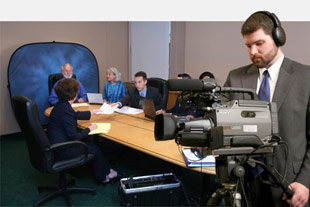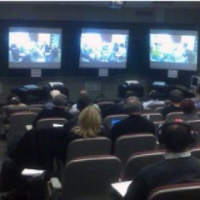How Legal Videography Can Enhance Your Courtroom Efficiency
How Legal Videography Can Enhance Your Courtroom Efficiency
Blog Article
Why Lawful Videography Is Critical for Accurate Court Recordings
The function of legal videography in courtroom settings can not be overstated, as it functions as a vital device for maintaining the honesty of court documents. By capturing both spoken and non-verbal interaction, it enhances the clarity of witness testaments and reflects the subtleties of court interactions. This thorough paperwork not only help in decreasing potential misconceptions however likewise supports appellate reviews, thus enhancing the judicial procedure. The ramifications of incorporating legal videography right into standard court practices increase important concerns concerning its wider influence on the legal system. What might these ramifications entail?
Value of Visual Proof
In the world of legal proceedings, the importance of aesthetic proof can not be overemphasized. Visual evidence acts as a powerful tool in establishing truths, supporting testaments, and enhancing the overall clearness of a situation. This type of proof, which consists of photos, video clips, and layouts, can offer a concrete context that verbal summaries typically do not have, consequently supplying courts and courts a more clear understanding of the conditions surrounding a situation.
Additionally, visual evidence aids in the retention of information. Human cognition is inherently visual, and individuals are more most likely to keep in mind and comprehend info provided in a visual format. In the courtroom, this can be crucial, as compelling aesthetic proof can guide viewpoints and reinforce the story presented by lawful reps.
In addition, using visual evidence can reduce misunderstandings and uncertainties that typically occur from verbal exchanges. By giving a straight representation of events, aesthetic proof helps to eliminate subjective interpretations and cultivates a much more objective examination of the realities. Subsequently, the combination of visual proof into legal procedures not only reinforces the stability of the judicial process yet additionally enhances the likelihood of accomplishing a just outcome.
Catching Non-Verbal Signs
Using innovative videography methods can dramatically boost the capture of non-verbal cues during legal process. Non-verbal interaction, consisting of facial expressions, body language, and eye call, plays a crucial role in communicating feelings and purposes that may not be explicitly mentioned in verbal testimony. legal videography. Legal videography utilizes high-def electronic cameras and strategic angles to ensure that these refined cues are taped with quality and precision
The capability to assess non-verbal behavior can offer important context to declarations made throughout court sessions. A witness's hesitation or self-confidence can be interpreted through their position or motions, possibly affecting the court's assumption of reliability. Additionally, the usage of close-up shots can aid concentrate on an audio speaker's expressions, permitting a more nuanced understanding of the testament.
Additionally, integrating multiple video camera angles can create an extensive view of interactions, highlighting dynamics in between events entailed. This complex strategy not just boosts the precision of the court document however likewise aids in preserving the honesty of the judicial procedure - legal videography. Eventually, catching non-verbal hints through legal videography cultivates a richer, extra total representation of courtroom proceedings

Enhancing Testimony Integrity
The integrity of testament can be dramatically bolstered via making use of top quality legal videography. Video clip recordings function as an unbiased tool that catches not only the talked words of witnesses but likewise the nuances of their shipment, consisting of tone, pacing, and emotional expressiveness. This complex paperwork offers a more clear understanding of check these guys out the witness's trustworthiness and purposes, which can be essential in lawful procedures.
Moreover, legal videography decreases the potential for misconceptions that might occur from composed records alone. When jurors can observe a witness's behavior and body movement along with their testimony, they are better furnished to assess the credibility and reliability of the evidence offered. This aesthetic context can strengthen the testimonial narrative, making it extra compelling and reliable.
In addition, the visibility of a video recording can hinder possible disparities in statement. Witnesses may be much more careful in their statements when they understand they are being taped, resulting in more precise and truthful accounts. In general, high-grade lawful videography enhances the integrity of statement, guaranteeing that the court has access to a complete and genuine representation of the facts as communicated by the witnesses.
Sustaining Appeals and Reviews
Lawful videography plays an important function in supporting appeals and evaluations by supplying an extensive visual record of courtroom procedures. This visual documentation captures not just the spoken words of witnesses and lawyers yet additionally the nuances of body language, intonation, and court dynamics. Such aspects can be crucial in comprehending the context of testaments and disagreements presented.
In the appellate procedure, where the emphasis is on mistakes of regulation and step-by-step justness, a video record can act as a crucial device for appellate courts. It makes it possible for judges to assess the initial trial context, ensuring that decisions are based on a complete understanding of the proceedings. The ability to visually analyze the behavior of witnesses or the communications between events can expose understandings that composed transcripts might forget.

Additionally, legal videography can assist in making clear ambiguities in testaments or procedural judgments, thus enhancing the basis for an appeal. By using a reliable, objective account of what taken place in court, Visit Website lawful videography not just sustains the honesty of the lawful process yet additionally equips all celebrations included to make informed choices regarding their instances.
Simplifying Court Room Processes
Enhancing court performance, lawful videography simplifies procedures by supplying instant accessibility to visual documents of proceedings. This modern technology enables judges, lawyers, and courts to review vital testimony and proof, ensuring article source that all parties have a clear understanding of the case. By capturing the subtleties of spoken and non-verbal interaction, videography improves the document, making it less complicated to understand the context and weight of testimonies.

Furthermore, video clip recordings can help with remote participation in hearings, allowing for higher flexibility in organizing and participation, which is especially useful in intricate situations involving several stakeholders.
Final Thought
To conclude, legal videography plays an essential duty in ensuring exact court recordings by giving crucial visual evidence that captures both verbal and non-verbal interaction. This technique boosts the reliability of statements, sustains appellate testimonials, and streamlines court processes. By cultivating a detailed understanding of court characteristics, legal videography eventually adds to extra equitable judicial end results, strengthening the honesty of the legal system and facilitating educated decision-making.
Report this page